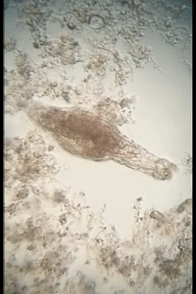Project Description: To build and assemble a TPI and DAF System for Lube Oil Blending Plant in Phillipine
Product Used in this Project:
Watterson Technology Sdn Bhd
Specialized in Water & Wastewater Treatment System
Okada Technology Sdn Bhd
Specialized in Sludge Dryer System
"Open Profile" MBBR Chips

Watterson's MBBR technology utilizes submerged surface area to allow for bacteria attached in a biological process. It is suitable in removing Chemical Oxygen Demand (COD) in a wastewater treatment system and at the same time reducing the footprint of the Wastewater Treatment Plant itself. Besides than that, it is also more reliable in treating ammonia through Nitrification process.
Watterson's "OPEN PROFILE" MBBR Chips



Non-Clogged MBBR Chips
Other's MBBR Chips

Clogged Conventional MBBR Chips



Comparison between Watterson's MBBR Chips and Conventional MBBR Chips
Advantages of using MBBR in Nitrification Process (Ammonia Removal)
Beside the advantages for COD and BOD removal, MBBR is also applies for Nitrification process or Ammonia Removal Process. MBBR is the most cost effective solution as it uses bacteria to oxidize the ammonia content. However, there are growing concerns that normal MBBR Chips may clogged up after few months or years when used in these process but with Watterson's MBBR Chips, the "Open Profile" structure of the MBBR Chips provides unrestricted access of backwash water's frictional force to clean itself. The figure below show the relation of Ammonium Nitrogen Removal Rate (g/m2/d) towards the amount of Oxygen Concentration (mg O²/L)

Ammonium Nitrogen Removal Rate Vs Oxygen Concentration and Organic Load

Ammonium Nitrogen Removal Rate Vs Ammonium Nitrogen Concentration and Dissolved Oxygen
The additional surface area provided by Watterson's MBBR Chips also helps in reducing footprint for any wastewater treatment plant. This can help reduce a lot of cost in build a huge plant and reduce land usage by reducing Aeration Tank volume in a wastewater treatment plant.

